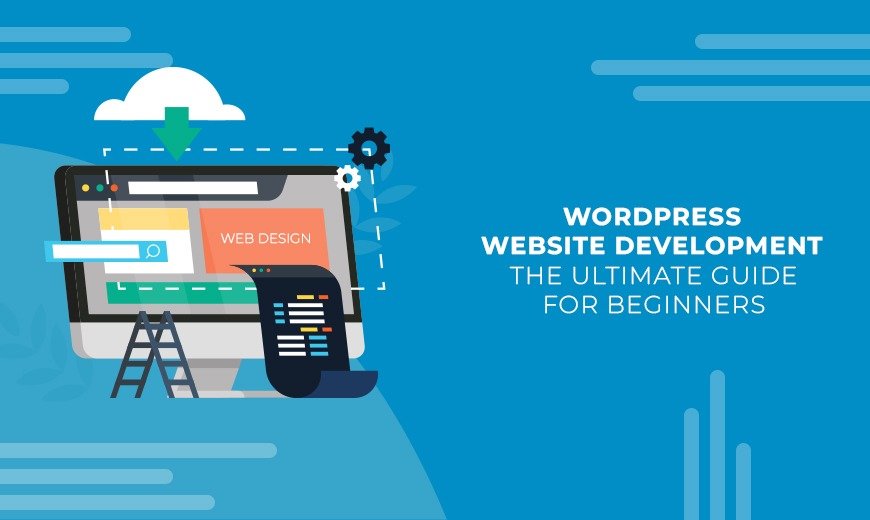
Embarking on the journey of creating a WordPress website can be both exciting and overwhelming for beginners. To ensure a smooth and successful development process, having a comprehensive checklist is essential. This ultimate WordPress website development checklist is designed to guide beginners through the key steps involved in setting up, customizing, and launching their website. From selecting the right theme to implementing security measures and ongoing maintenance, this article will cover all the crucial aspects to help beginners build a professional and functional website with confidence.
What is WordPress?
WordPress is an open-source content management system (CMS) that powers millions of websites worldwide. It provides users with a platform to create, manage, and publish digital content such as blogs, websites, e-commerce stores, portfolios, and more. Launched in 2003, WordPress has evolved into a highly versatile and user-friendly tool, catering to a diverse range of users, from individuals to large corporations.
Why WordPress?
As there are multiple content management systems in the industry, WordPress stands out as the most popular and widely used. According to research conducted in 2024, 42.12% of all websites on the web are powered by WordPress. To appreciate the significance of WordPress, let’s explore some of its major advantages below.
- User-Friendly Interface: WordPress offers a user-friendly interface, allowing even non-technical users to create and manage websites easily. Its intuitive dashboard and simple content editing tools make it accessible to beginners.
- Flexibility and Customization: WordPress provides a wide range of themes and plugins that enable users to customize their websites according to their specific needs and preferences. Whether it’s changing the design, adding functionality, or integrating third-party services, WordPress offers flexibility for customization.
- SEO-Friendly: WordPress is designed with search engine optimization (SEO) in mind. It generates clean and semantic code, offers customizable permalinks, and provides SEO plugins like Yoast SEO to optimize content for search engines. This makes it easier for websites to rank well in search engine results pages (SERPs).
- Community Support: WordPress has a vast and active community of developers, designers, and users who contribute to its development, provide support, and share resources. The community-driven nature of WordPress ensures that users have access to a wealth of knowledge, tutorials, forums, and plugins to enhance their websites.
- Scalability: WordPress is highly scalable, making it suitable for websites of all sizes, from small personal blogs to large enterprise websites. Its modular architecture allows users to add new features and scale their websites as their business or audience grows.
- Security: WordPress takes security seriously and regularly releases updates to address vulnerabilities and security threats. Additionally, there are various security plugins available to enhance website security, protect against malware, and prevent unauthorized access.
- Cost-Effectiveness: WordPress itself is free to use, and many of its themes and plugins are also available for free or at affordable prices. This makes it a cost-effective solution for individuals and businesses looking to establish an online presence without a significant upfront investment.
Let’s begin with the checklist via which you will be able to get the ultimate guidance to go through the WordPress website development process smoothly as a beginner.
Setting Up Your WordPress Website Development Environment
Firstly, you need to set up your WordPress website development environment. Here’s what you need to do:
Choosing a Hosting Provider
Think of a hosting provider as your website’s landlord. You want to find one that’s reliable, affordable, and offers good customer support. You don’t want a landlord who’s MIA when your site goes down, do you?
Here’s a list of five hosting providers, along with their websites:
Installing WordPress
Once you’ve got your hosting sorted, it’s time to install WordPress. It’s like setting up the foundation of your new home—essential. Most hosting providers have a one-click installation option, because who has time for the techy stuff, right?
Register a Domain
If you haven’t already, register a domain name for your website. Some hosting providers offer a free domain name with their hosting plans.
Access Your Hosting Account
Log in to your hosting account dashboard. This could be through the hosting provider’s website or a control panel like cPanel.
Find the WordPress Installer:
Look for an option like “WordPress Installer” or “One-Click Install” in your hosting account dashboard.
Start the Installation
Click on the WordPress installer tool and follow the prompts to start the installation process. You may need to provide some basic information, such as your website name, username, and password.
Choose Installation Directory:
Decide where you want to install WordPress. Typically, you can choose to install it in the root directory (e.g., yourdomain.com) or a subdirectory (e.g., yourdomain.com/blog).
Complete the Installation:
After configuring the installation settings, click on the “Install” or “Finish” button to complete the installation process.
Access Your WordPress Dashboard
Once the installation is complete, you’ll receive a confirmation message with a link to your WordPress dashboard. You can log in to your WordPress dashboard using the username and password you provided during installation.
Choosing the Right Theme and Plugins for Your WordPress Website Development Environment
Now that you’ve got your WordPress site up and running, it’s time to make it look snazzy and functional. Here’s what you need to focus on:
Selecting a Theme
Choosing a theme is like picking out the wallpaper for your website. You want something that suits your style, is easy to customize, and won’t break the bank. Remember, you can always change it if you get tired of the design—unlike that real wallpaper in your kitchen.
Essential Plugins to Install
Plugins are like little tools that add extra functionality to your site. From contact forms to SEO helpers, there’s a plugin for almost anything. Just like your smartphone apps, be careful not to go overboard and clutter your site with too many; nobody likes a cluttered home.
Customizing for Your WordPress Website Development Environment
You’ve got the bones of your site set up; now it’s time to make it your own. Get ready to put your personal stamp on things.
Customizing Theme Settings
Most themes come with customization options that allow you to tweak colors, fonts, and layouts. It’s like rearranging the furniture in your living room—make it comfy and just the way you like it.
Adding Custom CSS
For those who want to take things a step further, custom CSS lets you get into the nitty-gritty of your site’s design. It’s like DIY home decor—you have the power to make your site look exactly how you want it (just without the risk of accidentally drilling a hole in the wall).
Creating Essential Pages and Content for Your WordPress Website Development Environment
Your site is looking good, but now it needs some substance. Time to add the finishing touches:
Creating Homepage
Your homepage is like the front door to your website. Make it inviting, informative, and reflective of what your site is all about. First impressions count; you want visitors to feel like they’ve found the right place.
Writing About Us and Contact Pages
These pages are like the rooms where your guests can learn more about you (About Us) and where they can reach you (Contact). Be welcoming, be informative, and make sure your guests know where to find the snacks (metaphorical snacks; we’re talking about your content).
Optimizing for SEO and Performance in Your WordPress Website Development Environment
Installing SEO Plugins
When it comes to optimizing your website for search engines, SEO plugins are like little helpers that make your life easier. Install plugins like Yoast SEO or Rank Math to get those Google bots loving your site.
Optimizing Images and Content
A picture may be worth a thousand words, but it shouldn’t cost you loading speed. Compress those images and optimize your content for search engines to ensure your site runs smoothly and ranks well in search results.
Implementing Security Measures for Your WordPress Website Development Environment
Installing Security Plugins
Just like locking your front door, installing security plugins protects your website from cyber baddies. Plugins like Wordfence or Sucuri can help keep those sneaky hackers at bay.
Setting up SSL Certificate
Make your visitors feel safe and secure by setting up an SSL certificate. It’s like a digital bouncer that encrypts data between your site and your visitors, giving everyone peace of mind.
Testing and Launching
Testing Website Functionality
Before you unveil your masterpiece to the world, make sure everything works like a charm. Test all links, forms, and functionality to iron out any kinks.
Launching Your Website
It’s showtime! Hit that launch button and watch your website spread its wings and fly into the vast digital world. Congratulations! You’re officially live!
Ongoing Maintenance and Updates
Regular Backups
Backing up your website is like insurance for your digital asset. Schedule regular backups to ensure that if anything goes awry, you can easily restore your site to its former glory.
Updating Themes and Plugins
Themes and plugins are like bread and butter for your website, but just like real food, they need to stay fresh. Keep them updated to ensure your site stays sleek, secure, and running like a well-oiled machine.
As you work through this comprehensive checklist, remember that building a WordPress Website Development is a continuous learning process. By following these steps and staying proactive in maintaining your site, you can create a successful online presence that resonates with your audience. With dedication and a commitment to ongoing improvement, your WordPress website will continue to evolve and thrive in the digital landscape. Happy developing!
Bio
WebHub is your one-stop partner for digital success. Our team of experts in web design, development, marketing, and creative fields works together to craft custom solutions that propel your business forward. We believe in building trust and exceeding expectations through exceptional service, quality, and transparency.




